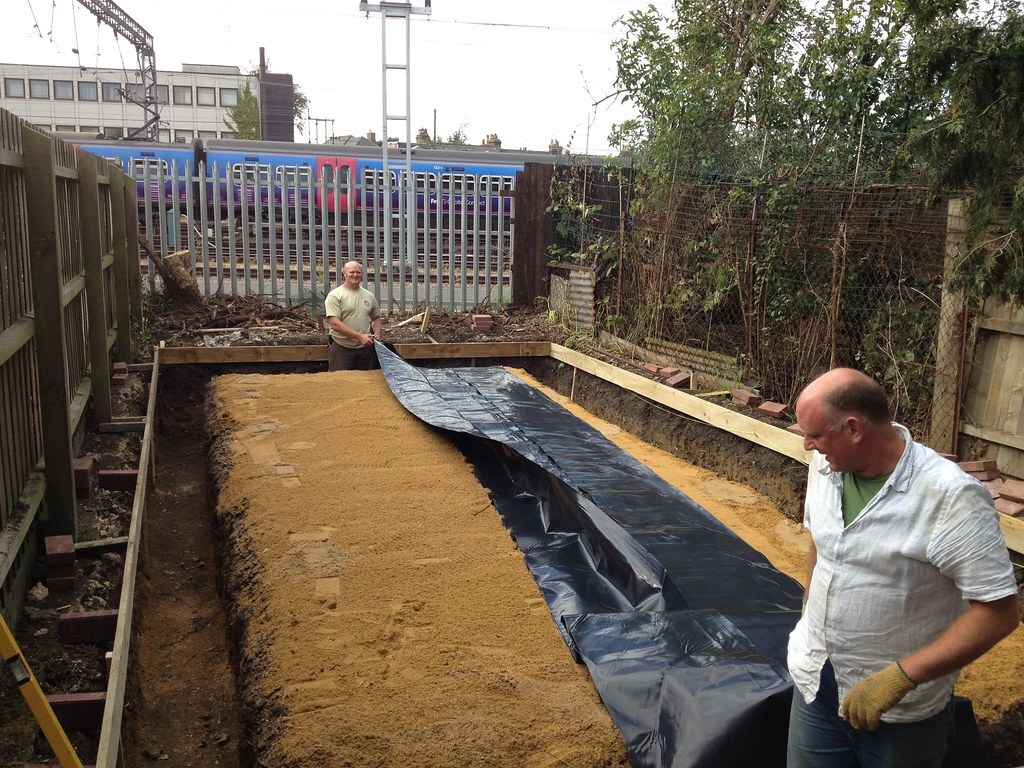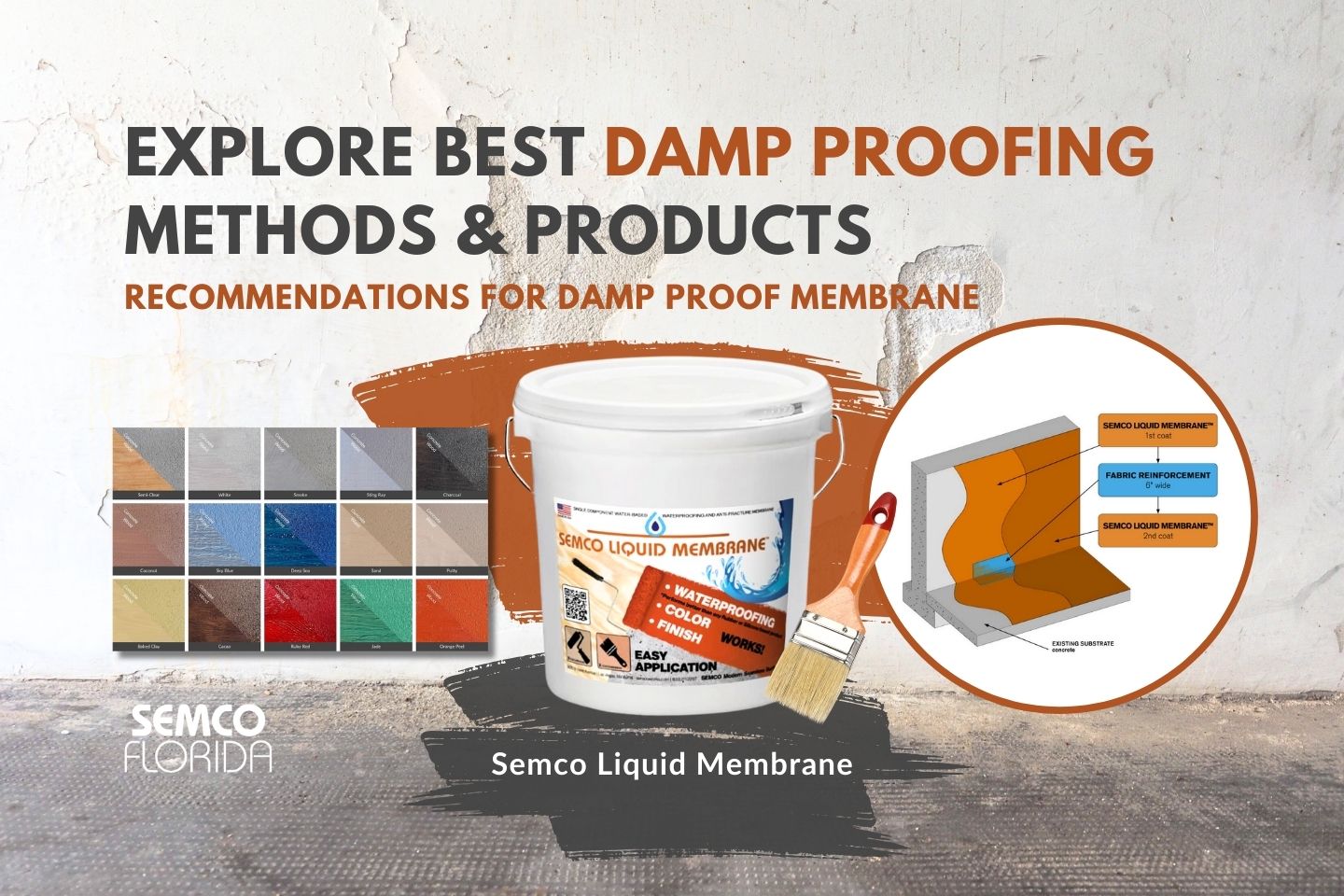Seven key strategies for mould removal newcastle that actually help
Seven key strategies for mould removal newcastle that actually help
Blog Article
Checking Out the Numerous Techniques and Solutions for Effective Damp Proofing
Moisture in structures positions considerable difficulties to both architectural honesty and indoor air quality. Various techniques and options have actually arised to combat this pervasive problem. From traditional damp-proof membrane layers to ingenious chemical treatments, each technique supplies distinct advantages. Recognizing these alternatives is vital for reliable moisture control. Nevertheless, picking the appropriate solution depends on specific building conditions and requirements, triggering more expedition right into one of the most effective wet proofing techniques offered.
Comprehending the Reasons For Moisture
Wetness can develop from different sources, recognizing these reasons is important for effective removal. Typically, dampness stems from three key resources: climbing moist, penetrating damp, and condensation. Increasing wet takes place when groundwater takes a trip upwards through permeable materials, such as block or stone, usually because of a lack of an effective obstacle (damp removal newcastle). Permeating wet is commonly triggered by external variables, consisting of roof leaks, malfunctioning rain gutters, or harmed wall surfaces, enabling water to penetrate a property. Condensation, on the other hand, arises from excess wetness airborne, typically aggravated by poor ventilation and temperature level differences, causing water droplets basing on surfaces. Recognizing these underlying issues is crucial, as each kind of wetness needs a customized approach for remediation. Correct assessment assists in identifying one of the most effective remedies, ultimately safeguarding the architectural honesty of a building and improving interior air quality
Standard Damp-Proof Membrane Layers

Chemical Damp-Proofing Solutions
Chemical damp-proofing services use an innovative strategy to stop moisture breach in structures. These approaches typically entail the application of fluid chemicals that pass through masonry and form an obstacle against increasing wet. Frequently made use of chemicals consist of silanes, siloxanes, and various other water-repellent representatives that react with surface area products to produce a hydrophobic layer.The application process typically calls for drilling holes into the wall surfaces, injecting the chemical option, and allowing it to heal. This approach is specifically useful for older frameworks where standard damp-proof membranes might be unwise. Additionally, chemical damp-proofing can be less disruptive and extra cost-effective than extensive renovation projects.While reliable, these options depend upon proper application and ecological conditions for peak efficiency. Routine maintenance and surveillance are necessary to guarantee the long life of the damp-proofing therapy. In general, chemical damp-proofing represents a functional alternative for guarding buildings versus moisture-related damages
Cavity Wall Surface Construction Methods
Cavity wall surface building and construction methods offer various advantages, specifically in dampness control and power performance. By including an air space in between 2 layers of masonry, these wall surfaces properly mitigate water access while improving insulation. This mix not just protects structures from dampness however additionally adds to decreased power consumption.
Benefits of Dental Caries Wall Surfaces
When taking into consideration efficient wet proofing approaches, the advantages of dental caries wall surfaces stand out plainly. Tooth cavity wall surfaces include 2 different layers, creating an air void that efficiently minimizes dampness penetration. This design reduces the danger of wetness, as the external wall surface serves as an obstacle versus rainfall and water ingress. In addition, tooth cavity walls improve thermal insulation, which contributes to energy efficiency by reducing warm loss. They also provide sound insulation, aiding to develop a quieter interior environment. The air gap allows for air flow, which aids in wetness control and reduces the likelihood of mold and mildew development. These advantages not only improve the overall comfort of a building but also add to its longevity and architectural honesty.
Wetness Control Methods
Reliable dampness control methods are important in cavity wall surface construction to assure long-term defense versus dampness. One main approach includes the unification of weep holes, which facilitate water drain from the tooth cavity, protecting against buildup. Furthermore, using breathable membranes can aid manage wetness levels while permitting caught vapor to escape. Proper placement of insulation is likewise crucial, as it must not block drainage courses. In addition, making sure that the external fallen leaves of the dental caries wall are built with waterproof materials enhances overall resilience. Routine maintenance checks are vital to determine any obstructions or damages early, securing the structure's stability. Eventually, a mix of these methods creates a robust defense versus dampness intrusion in cavity walls.
Insulation and Energy Effectiveness
Insulation plays a vital role in improving power performance within cavity wall surface construction. By incorporating insulating materials, these walls develop a thermal obstacle that minimizes heat loss and decreases power intake. Reliable insulation not just aids keep a secure indoor temperature level however also mitigates the risk of dampness, as it prevents condensation within the wall surface cavity. Different methods, such as using rigid foam boards or mineral wool, can be employed to achieve ideal insulation efficiency. Furthermore, appropriate installation is important to guarantee that gaps and spaces are reduced, which can otherwise endanger power effectiveness. Eventually, a well-insulated cavity wall surface contributes greatly to total sustainability and lowers home heating and air conditioning expenses for property owners.
Outside Damp Proofing Techniques
Exterior damp proofing techniques are crucial for protecting structures from wetness seepage. Two effective techniques consist of the application of water resistant membrane layers and the installment of French drains. These remedies help reduce water buildup and maintain the stability of buildings.
Waterproof Membrane Application
While various techniques exist for avoiding wetness access, the application of waterproof membrane layers remains an extremely reliable external damp proofing method. These membrane layers are normally made from products such as polyethylene, rubber, or modified asphalt, providing a durable obstacle against water penetration. The installment process entails using the membrane to the external surface areas of wall surfaces or structures, ensuring total coverage to protect against leaks. Appropriate adhesion and securing at joints are critical to optimizing effectiveness. Water resistant membranes can be applied in numerous forms, including liquid coverings and sheet membrane layers, enabling for versatility based upon the particular demands of the structure. This approach not only protects buildings from dampness however likewise improves their longevity and structural integrity.
French Drainpipe Installment
One efficient technique for handling groundwater and protecting against dampness accumulation around a building's structure is the setup of a French drain. This drainage system consists of a trench full of gravel and a perforated pipeline that reroutes surface area water away from the foundation. Proper installation calls for mindful planning, making certain that the drainpipe inclines away from the structure to assist in perfect water flow. Additionally, the area of the drainpipe is essential; it must be placed in locations susceptible to merging or excess dampness. Normal upkeep, including clearing debris from the gravel and making certain the pipeline remains unobstructed, is important for long-term performance. Eventually, a well-installed French drainpipe can considerably lower the threat of water-related problems in foundations and basements.
Inside Waterproofing Methods
Interior waterproofing approaches are crucial for safeguarding a structure's inside from moisture infiltration and prospective water damage. These techniques usually involve the application of customized products and methods developed to develop a wetness obstacle within the structure. One common strategy is the use of waterproof coatings or sealers on walls and floorings, which avoid dampness from passing through surfaces.Additionally, installing indoor drainage systems, such as sump pumps, can properly handle water accumulation in cellars and creep areas. One more technique includes making use of vapor obstacles, which are mounted to hinder wetness activity from the ground right into living spaces.Moreover, resolving any fractures or voids in wall surfaces or foundations with suitable sealers assures an extensive protection versus water breach. By executing these interior waterproofing approaches, homeowner can significantly lower the risk of mold growth, structural damage, and other moisture-related concerns. Proper execution of these strategies is essential for long-lasting defense and building integrity.
Normal Maintenance and Evaluation Practices
Routine maintenance and inspection methods are crucial for ensuring the long-lasting efficiency of moist proofing options in any kind of structure. Regular checks make it possible for residential property proprietors to recognize very early indications of moisture intrusion, such as peeling paint, mold and mildew development, and mildewy smells. These signs can signal underlying concerns that need instant attention.Inspections ought to be conducted a minimum of annually, concentrating on at risk locations like cellars, crawl rooms, and exterior walls. Throughout these analyses, homeowner need to examine sealers, drain systems, and air flow to validate they work correctly.Additionally, maintaining downspouts and seamless gutters is essential, as blocked systems can result in water accumulation near the foundation. Applying a normal maintenance schedule, along with timely fixings, can substantially prolong the lifespan of wet proofing procedures and safeguard the architectural stability of the structure. Positive steps ultimately add to the general health and wellness and safety of the living setting.
Frequently Asked Inquiries
Exactly How Long Does Damp Proofing Generally Last?
The period of damp proofing performance varies, commonly lasting between 20 to half a century. Elements such as application top quality, environmental conditions, and upkeep methods significantly affect the longevity of the moist proofing therapy.

Can I Damp Evidence My Home Myself?
The individual contemplated the feasibility of do it yourself damp proofing. With appropriate research study and the right materials, it is possible. Nonetheless, they likewise recognized the relevance of specialist assistance to ensure durable performance and protect against future concerns.
What Are the Signs of Inadequate Damp Proofing?
Indicators of inefficient damp proofing include persistent musty odors, noticeable mold development, peeling paint, damp spots on walls, and wood decay - damp removal newcastle. Home owners must resolve these issues quickly to stop additional damages and wellness problems
Does Damp Proofing Affect Indoor Air Quality?

Just How Much Does Professional Damp Proofing Price?
Expert wet proofing expenses differ significantly, usually ranging from $1,000 to $5,000 depending on the building's size, the extent of the wet issue, and selected techniques. Each scenario needs a tailored evaluation for accurate prices. Typically, dampness stems from three key sources: climbing damp, penetrating damp, and condensation. When taking into consideration effective damp proofing methods, the benefits of dental caries wall surfaces stand out plainly. Outside damp proofing approaches are vital for shielding structures from moisture seepage. While numerous approaches exist for stopping dampness ingress, the application of waterproof membrane layers remains a very efficient outside moist proofing technique. Signs of ineffective wet proofing consist of persistent moldy smells, visible mold and mildew development, peeling paint, moist spots on wall surfaces, and wood decay.
Report this page